Ecuador demonstration shows better yield, survival rate and feed conversion
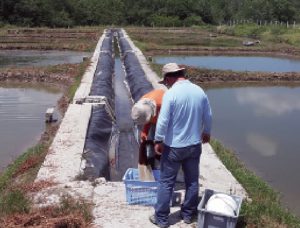
Despite the apparent success story reflected in the past and projected expansion of shrimp aquaculture, production in many regions continues to suffer economic losses due to the impacts of a wide variety of diseases. White spot syndrome (WSS), one of the main causes of the stagnating shrimp industry in the 1990s, continues to affect production in Mexico, Central America and South America, where the more extensive farming methods in large ponds do not allow effective biosecurity measures against the virus that causes the disease. The shrimp production in Southeast Asia and Mexico has been ravaged since late 2012 by a new disease known as early mortality syndrome (EMS or acute hepatopancreatic necrosis disease).
Shrimp, microflora
Shrimp actively “graze” on the bottom substrates of ponds and are therefore highly exposed to exchanges of microflora between the environment and their digestive systems. This increases the risk for proliferation of unfavorable gut microflora, which can affect digestive functioning.
Furthermore, the digestive systems of shrimp are main entry points for the bacterial and viral infections that remain a major risk for profitable shrimp production. The use of antibiotics to control microbial development throughout the production process is not desirable due to the risk for building up resistance and its rejection by legislators and consumers.
The shrimp industry requires alternative ways to control the microbial ecosystems in production systems. Sustainable approaches to modulate the gut microflora in shrimp include the use of a variety of natural compounds capable of modulating the microflora toward a favorable composition, such as probiotics, organic acids, yeast extracts and phytobiotics.
These strategies may have synergistic effects. For example, phytobiotics can enhance the establishment of probiotic bacteria and therefore enhance the efficacy of probiotic inoculations in the production system.
Functional feeds
Functional feeds containing gut health promotors deliver with every meal an adequate concentration of natural antimicrobial activities into the shrimp gut. These feeds are a key component of any strategy to prevent diseases, particularly when opportunistic bacteria are a major cause of mortality. However, the success of this approach depends on the efficacy of the selected gut health promoter.
Gut-modulating feed additives ideally are heat stable and can therefore be easily incorporated into feed at the feed mill and be present in every meal from the starter feed onwards, without requiring major adaptions of production protocols at the nursery or farm.
The second author and Dr. Tim Goossens reported in the January/February 2014 issue of the Global Aquaculture Advocate that natural feed additives combining different action mechanisms, such as direct bactericide/bacteriostatic properties, as well as quorum sensing inhibition properties at concentrations below minimum inhibitory concentration, are most promising to reduce the impacts from bacterial diseases such as vibriosis.
Farm trial
The authors performed a pilot-scale farm trial earlier this year to evaluate the effects on shrimp productivity of a feed additive with multiple actions on gut health. The trial was executed at the experimental station of a shrimp farm located in the Guayas Province of Ecuador during the period of February to April. During the trial, two treatments differed only with regard to the addition of a commercial phytobiotic additive to the standard 35 percent protein feed used at the farm. The additive was added by top dressing at 3 g/kg of feed using a commercial binder throughout the trial period.
The experimental ponds of approximately 170-m2 area were seeded with shrimp of an average size of 70 mg at a density of 10/m2. The test treatment and control were run in five and three replicated ponds, respectively, for 78 days. The feed was applied once daily during the morning following the same fixed table for all ponds. Pond management followed the routine production protocols of the farm.
| Treatment | Survival (%) | Shrimp size (g) | Crop yield (kg/ha) | Feed conversion ratio | Weekly growth (g) |
|---|---|---|---|---|---|
| Phytobiotic | 57.4 +/- 10.8 | 15.6 +/- 1.0 | 8855 +/- 149 | 1.20 +/- 0.20 | 1.40 +/- 0.09 |
| Control | 47.3 +/- 3.1 | 16.4 +/- 0.7 | 776 +/- 83 | 1.41 +/- 0.14 | 1.47 +/- 0.06 |
| Change | 20.5% | -4.7% | 14.1% | -14.9% | -4.7% |
Although the inherent variation among ponds (P > 0.05 for all production variables) did not allow the detection of statistically significant differences, the trial showed some interesting trends (Table 1). The supplementation of the gut health modulator resulted in values that were 20.5 percent higher for survival, 14.1 percent greater for crop yield and 14.9 percent better for feed conversion than the values in the control treatment. However, shrimp that received the feed additive showed 4.7 percent slower growth.
Other studies
In these production trials, the main disease challenges at the farm consisted of WSS and vibriosis. The improved survival relative to the control was in line with observations made in past trials in Panama (Figure 1).
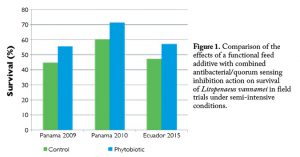
Natural feed additives that combine different action mechanisms against Vibrio species have proven effective in improving survival under challenging situations where shrimp are exposed to bacterial pathogens. In a 2011 paper presented at the International Shrimp Culture Symposium and Exhibition, Dr. Jorge Cuellar said that compared to results for controls, the inclusion in a standard pelletized feed of the botanical feed additive used in the current study improved survival 24 percent and 18 percent during two independent production cycles at a semi-intensive shrimp farm in Panama.
The negative effect on growth observed in the current trials needs further study. In semi-intensive farming, the use of fixed feeding tables often causes an interference between survival and growth due to the lack of correction of feed availability per shrimp in function of survival. This often results in a growth limitation in the treatment showing the best survival.
In a study by Dr. Loc Tran and collaboraters reported in the May/June Aqua Culture Asia Pacific, the researchers confirmed the effects of the same synergistic phytobiotic product in a controlled challenge trial with a pathogenic EMS strain of Vibrio parahaemolyticus under laboratory conditions.
The researchers reported 62 to 107 percent increased survival in shrimp that received the additive during three weeks prior to the experimental infection, compared to unsupplemented control groups. The addition of the phytobiotic product in the diet resulted in consistently lower Vibrio counts in the digestive systems of the shrimp that consumed the diets compared to the counts in the control shrimp, illustrating the capability of gut-modulating additives to protect shrimp’s gut flora throughout a Vibrio challenge.
Authors
-
Juan Carlos Valle
Aquaculture Consulting
Guayaquil, Ecuador[109,111,99,46,111,111,104,97,121,64,99,101,101,108,108,97,118,99,106]
-
Peter Coutteau, Ph.D.
Nutriad International
Dendermonde, Belgium
USDA Agricultural Research
Tagged With
Related Posts
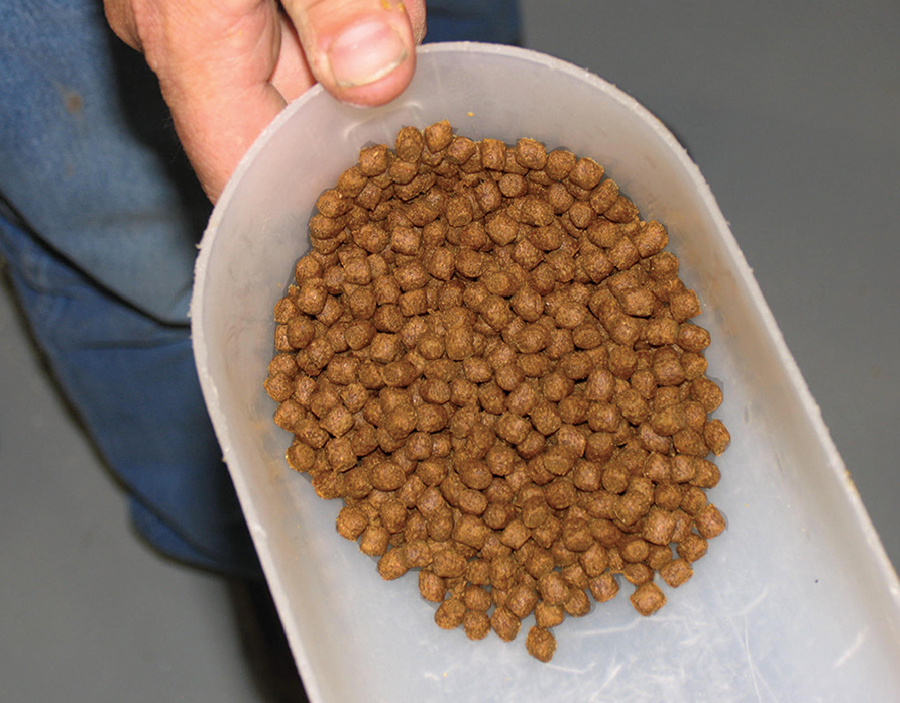
Aquafeeds
Insect meals: Novel protein, fat sources for farmed shrimp
Poor-quality ingredients can’t become good-quality ingredients. Quality protein is essential for the healthy growth of any omnivorous or carnivorous aquaculture species. Insect meals seem to fill this need, and their mass-scale production appears to be sustainable.
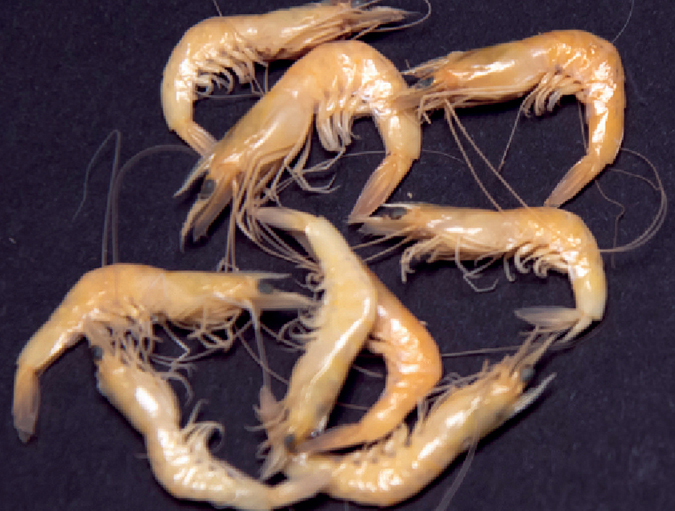
Health & Welfare
Limited decomposition enhances PCR detection of AHPND Vibrio in shrimp
A study confirmed the utility for improved polymerase chain reaction (PCR) detection of the Vibrio bacteria that cause acute hepatopancreatic necrosis disease (AHPND) in asymptomatic shrimp by permitting the shrimp to expire and decompose for several hours prior to preservation and PCR processing.
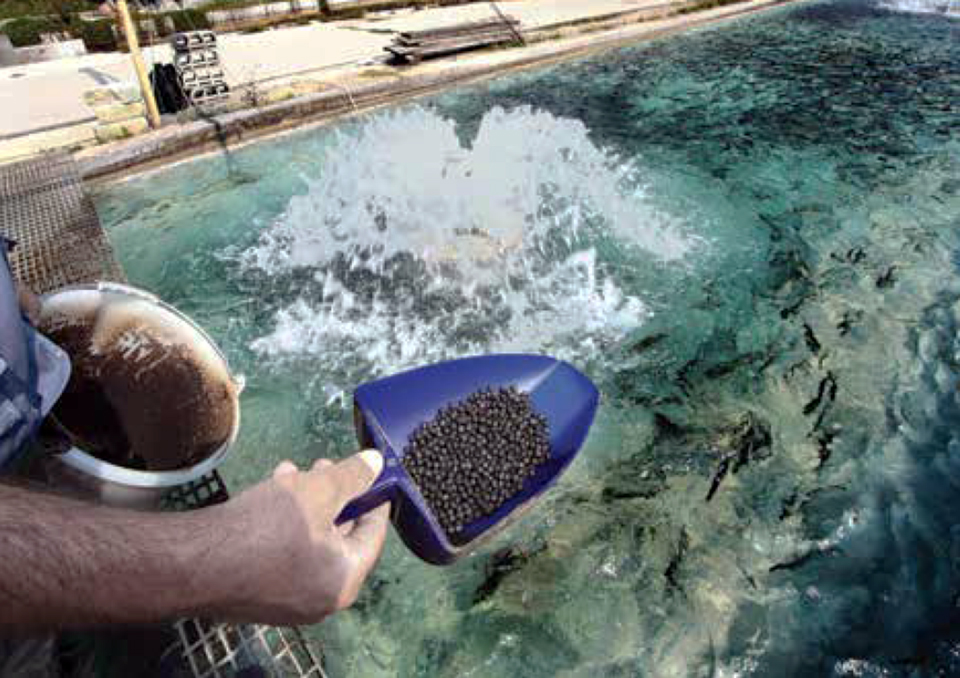
Health & Welfare
Phytogenic feed additives stimulate performance, health gains in fish, shrimp
Phytogenics, which include a variety of herbs, spices and essential oils, can be applied through different strategies in aquaculture to improve feed efficiency, growth performance and disease resistance.
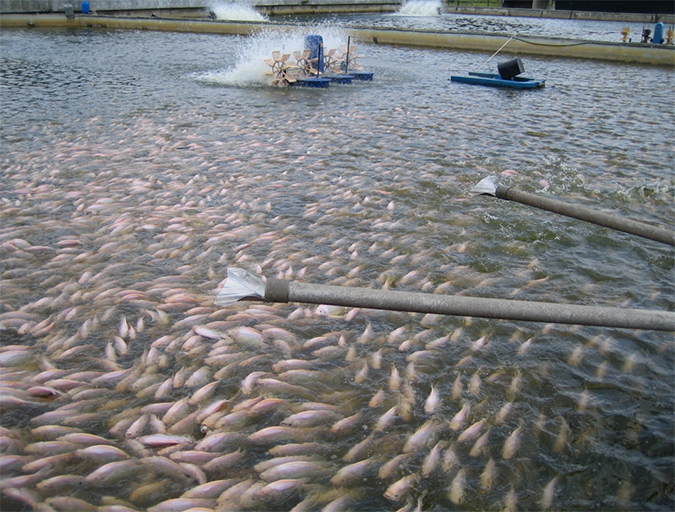
Health & Welfare
Dietary organic acids used as growth promoters, anti-microbials
A feeding trial measured growth, nutrient utilization and faecal/gut bacterial counts in triplicate groups of red hybrid tilapia (Oreochromis sp.). Study results show that dietary organic acids can potentially replace OTC as a growth promoter and anti-microbial in tilapia feeds.


